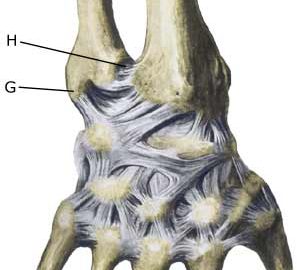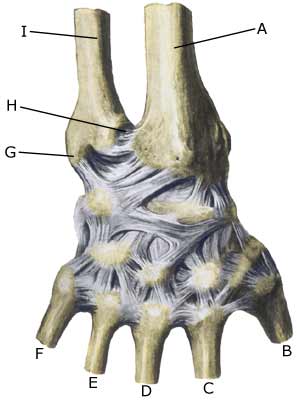|
||
|
||
| Cause: A fracture can occur in the bones in instances of a blow or a fall on an outstretched arm. In adults the antebrachial bone often fractures close to the wrist, causing a characteristic fork shaped angling of the wrist (fractura Colles). In children fractures on the antebrachial bone is often localised to the growth zone on the radius (epifysiolysis radii).
Symptoms: Sudden pain in the forearm and pain conditioned constriction of movement of the arm after heavy load (fall). An angling of the lower arm is occasionally visible. Acute treatment: Click here. Examination: Sudden powerful pains in the arm, with movement constriction after a fall should always lead to medical examination. A fracture is usually visible in an X-ray examination, and the treatment can be determined based on the type of fracture. Treatment: In cases of significant displacement or angling of the bones, the fracture is reset under anaesthesia, after which it is bandaged for a few weeks. With special types of fracture it may be necessary to stabilise the fracture surgically. It is important to commence rehabilitation of the hand as soon as the bandage is removed (article). Rehabilitation: Once pain has diminished fitness training can be commenced in the form of cycling and running, together with rehabilitation according to the guidelines under rehabilitation, general. The rehabilitation is completely dependant on the type of fracture and treatment. Bandage: It is possible to manufacture individual hard plastic bandages for the wrist and fingers for use during sports activity after bone fractures. Complications: In the vast majority of cases the fracture heals without complications. In some a bad healing can occur, the blood and nerve supply to the arm can be affected, acute compartment syndrome. In case of lack of progress or a conspicuous amount of pain despite the hand being at rest, you should consult your doctor. |


